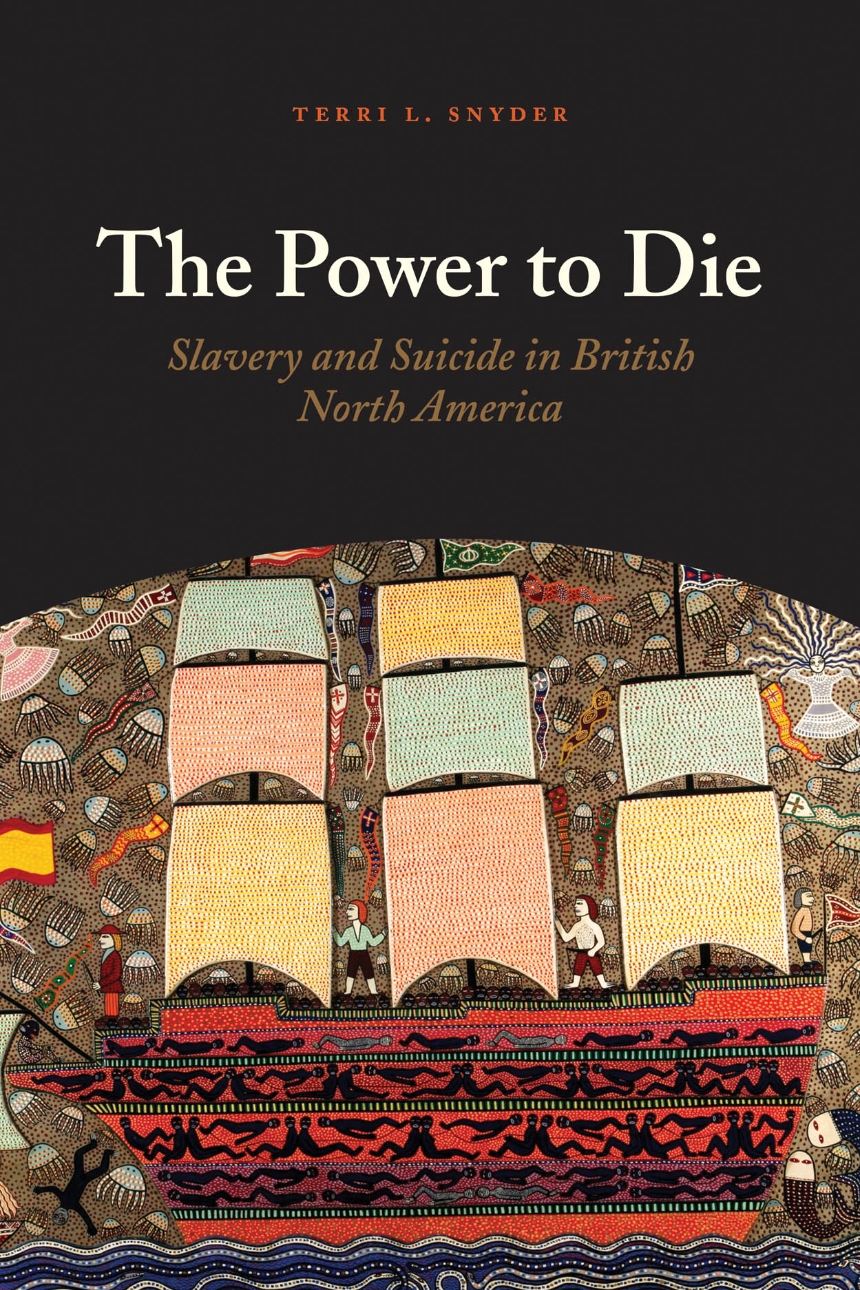The Power to Die
Slavery and Suicide in British North America
The history of slavery in early America is a history of suicide. On ships crossing the Atlantic, enslaved men and women refused to eat or leaped into the ocean. They strangled or hanged themselves. They tore open their own throats. In America, they jumped into rivers or out of windows, or even ran into burning buildings. Faced with the reality of enslavement, countless Africans chose death instead.
In The Power to Die, Terri L. Snyder excavates the history of slave suicide, returning it to its central place in early American history. How did people—traders, plantation owners, and, most importantly, enslaved men and women themselves—view and understand these deaths, and how did they affect understandings of the institution of slavery then and now? Snyder draws on ships’ logs, surgeons' journals, judicial and legislative records, newspaper accounts, abolitionist propaganda and slave narratives, and many other sources to build a grim picture of slavery’s toll and detail the ways in which suicide exposed the contradictions of slavery, serving as a powerful indictment that resonated throughout the Anglo-Atlantic world and continues to speak to historians today.
In The Power to Die, Terri L. Snyder excavates the history of slave suicide, returning it to its central place in early American history. How did people—traders, plantation owners, and, most importantly, enslaved men and women themselves—view and understand these deaths, and how did they affect understandings of the institution of slavery then and now? Snyder draws on ships’ logs, surgeons' journals, judicial and legislative records, newspaper accounts, abolitionist propaganda and slave narratives, and many other sources to build a grim picture of slavery’s toll and detail the ways in which suicide exposed the contradictions of slavery, serving as a powerful indictment that resonated throughout the Anglo-Atlantic world and continues to speak to historians today.
256 pages | 19 halftones, 1 table | 6 x 9 | © 2015
History: American History
Law and Legal Studies: Legal Thought
Sociology: Race, Ethnic, and Minority Relations
Reviews
Table of Contents
List of Figures
Acknowledgments
Prologue / Anna’s Leap
Introduction / The Problem of Suicide in North American Slavery
One / Suicide and the Transatlantic Slave Trade
Two / Suicide and Seasoning in British American Plantations
Three / Slave Suicide in the Context of Colonial North America
Four / The Power to Die or the Power of the State? The Legalities of Suicide in Slavery
Five / The Paradoxes of Suicide and Slavery in Print
Six / The Meaning of Suicide in Antislavery Politics
Epilogue / Suicide, Slavery, and Memory in American Culture
Studying Slave Suicide: An Essay on Sources
Abbreviations
Notes
Select Bibliography of Primary Sources
Index
Acknowledgments
Prologue / Anna’s Leap
Introduction / The Problem of Suicide in North American Slavery
One / Suicide and the Transatlantic Slave Trade
Two / Suicide and Seasoning in British American Plantations
Three / Slave Suicide in the Context of Colonial North America
Four / The Power to Die or the Power of the State? The Legalities of Suicide in Slavery
Five / The Paradoxes of Suicide and Slavery in Print
Six / The Meaning of Suicide in Antislavery Politics
Epilogue / Suicide, Slavery, and Memory in American Culture
Studying Slave Suicide: An Essay on Sources
Abbreviations
Notes
Select Bibliography of Primary Sources
Index
Awards
Western Association of Women Historians (WAWH): Richardson Keller-Sierra Prize
Won
